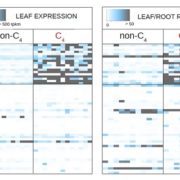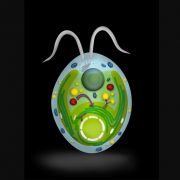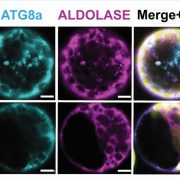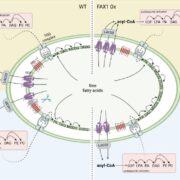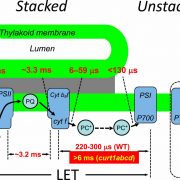Recruiting the ATP-generating nanomotor in chloroplasts
By Thilo Rühle
Background: Thylakoid ATP synthases are impressive molecular engines that harness the light-driven proton gradient to generate ATP during photosynthesis. Their molecular mode of operation and atomic structure have been elucidated, but their assembly process is still under investigation. Specific auxiliary factors assist in ATP synthase assembly and prevent the accumulation of dead-end products or deleterious intermediates. CGL160 is one such factor and consists of a membrane and an N-terminal domain. The membrane domain of CGL160 is distantly related to bacterial Atp1 proteins, which are also present in cyanobacteria. Previous studies demonstrated that CGL160 promotes efficient formation of the membranous c-ring of thylakoid ATP synthases in Arabidopsis thaliana.
Question: What is the function of the green lineage-specific N-terminal domain of CGL160 in thylakoid ATP synthase assembly, and what is the evolutionary relationship between CGL160 and Atp1?
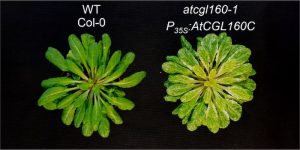 Findings: Here, we showed that the N-terminal domain of CGL160 is required for the late steps in thylakoid ATP synthase assembly and recruits the stromal ATP synthase intermediate coupling factor CF1. The assembly step is critical for chloroplast development in the dark, ATP synthase activity, and photosynthesis in Arabidopsis thaliana. We also revealed that Atp1 from the cyanobacterium Synechocystis spec PCC 6803 could functionally replace the membrane domain of CGL160 in Arabidopsis thaliana. These results indicated that Atp1 operates in c-ring assembly in cyanobacteria and that CGL160 evolved from its cyanobacterial ancestor Atp1. However, CGL160 acquired an additional function in linking a soluble ATP synthase intermediate to a membranous subcomplex.
Findings: Here, we showed that the N-terminal domain of CGL160 is required for the late steps in thylakoid ATP synthase assembly and recruits the stromal ATP synthase intermediate coupling factor CF1. The assembly step is critical for chloroplast development in the dark, ATP synthase activity, and photosynthesis in Arabidopsis thaliana. We also revealed that Atp1 from the cyanobacterium Synechocystis spec PCC 6803 could functionally replace the membrane domain of CGL160 in Arabidopsis thaliana. These results indicated that Atp1 operates in c-ring assembly in cyanobacteria and that CGL160 evolved from its cyanobacterial ancestor Atp1. However, CGL160 acquired an additional function in linking a soluble ATP synthase intermediate to a membranous subcomplex.
Next steps: The next steps are to identify all auxiliary factors required for the assembly of thylakoid ATP synthases and to understand their precise function in ATP synthase formation. Detailed knowledge of the factors and the assembly process could provide elegant strategies for adjusting proton circuits and altering the ATP budget in crops or other photosynthetic organisms.
Reference:
Bennet Reiter, Lea Rosenhammer, Giada Marino, Stefan Geimer, Dario Leister and Thilo Rühle. (2022). CGL160-mediated recruitment of the coupling factor CF1 is required for efficient thylakoid ATP synthase assembly, photosynthesis, and chloroplast development in Arabidopsis. https://doi.org/10.1093/plcell/koac306


